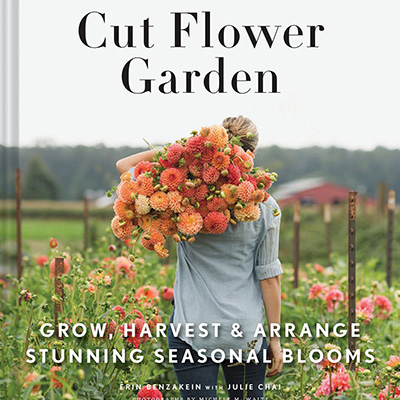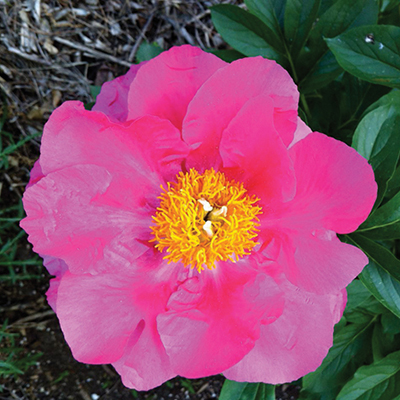This article originally appeared in the November/December Growing for Market Magazine
We started our farm in 2006 and by 2007 we were starting to construct our first hoophouse. We knew that having on average five months of frost-free days to grow crops outside in Columbus, Ohio, wasn’t going to sustain us through the winter. As new challenges arise mostly in winter but also summer greenhouse growing, we seek out answers from multiple sources, including Ohio State and other university contacts, sales reps, tech support, but most importantly, other growers (many of whom are veggie growers).
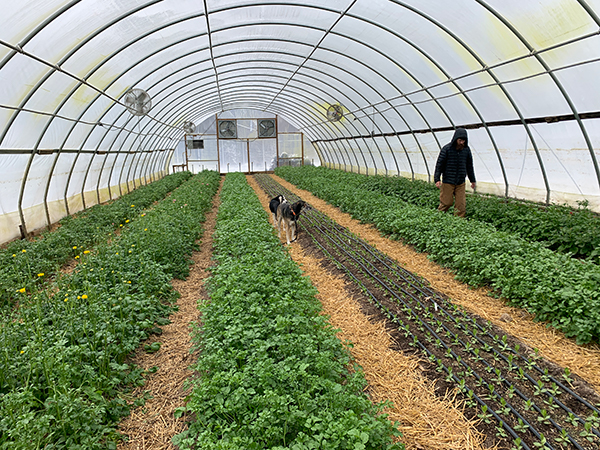
Over the last 10 years, there has been a lot of information coming out pertaining to growing veggies in soil in greenhouses. We wanted to share some of what we’ve learned over the past 13 years growing flowers under plastic and touch on some new approaches we’ve implemented since we last wrote about greenhouse growing (see our GFM articles in November 2014, November 2015, and April 2018). For reference, we use the term hoophouse for an unheated house and greenhouse for a structure with heat added.
Winter
We grow cut flowers year-round and harvest them from March to December. We have found limited information in the floriculture world when it comes to growing in ground beds under plastic. We’ve visited many growers’ greenhouses with concrete beds poured to shape the 14-inch growing beds or old lumber benches waist high to save your back during harvest and planting.
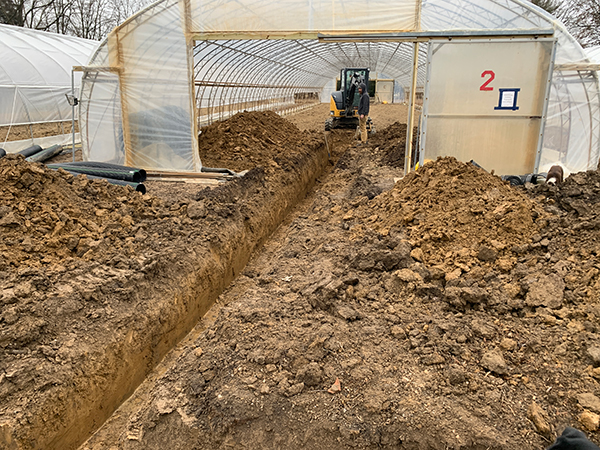
In the past, growing in raised beds or on benches was commonplace, whereas now many growers grow in black bulb crates. Greenhouse beds that are in the soil (ground beds) and any bare ground in the walkways release a lot of unwanted moisture during the evening when the houses are closed up.
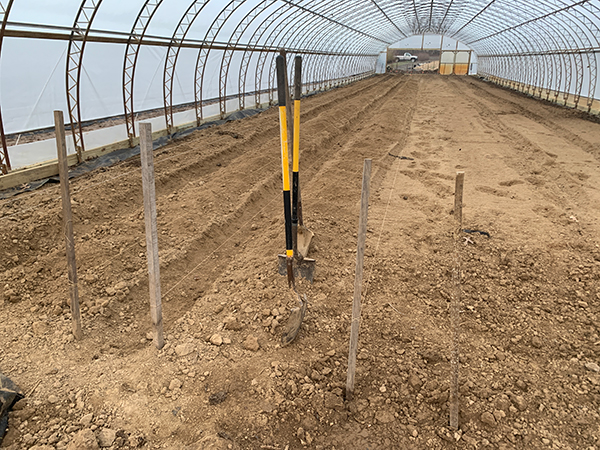
We’ve started to put straw down in our walkways when we prep them during the fall. We dig out our walkways (as our version of raised beds) as much as we can to help the crops to stay as high and dry during the winter’s cold, wet months. After we plant the beds, we apply about two inches of straw to the walkways. We only dig our beds during winter growing season. We walk the pathways all year and re-dig them next season, and we then put all that organic matter into our beds.
However, the main value is in covering as much bare ground as possible to eliminate evaporation during the times of day when the houses are closed. We are in an ongoing battle to keep humidity under 89 percent in our structures when they are closed up.
Ventilation for air exchange
Venting is something that we never thought was that important on mild days, or even on really cold ones in the middle of winter. What we’ve learned, especially in our climate where we don’t get a ton of sun in the winter, is that the greenhouse venting for air exchange not only decreases disease pressure, but also decreases humidity in the greenhouse. Our goal is to not have condensation on the roof. Dripping from the inside of the plastic can lead to damage on the petals, botrytis and mildew issues. So, we vent our houses both heated and unheated daily, even on the coldest days.
We built the hoophouses to have person doors on each end of the structure so that if we don’t want too much airflow, we can just open the doors instead of the sides. We close the houses as little as is necessary to keep the crops alive. For instance, we recently had our first frost scare of the season, and all the houses were full of dusty miller, scented geraniums, salvia, eucalyptus, and lisianthus. It was going to be a cold night, but we still left the houses open, sides and all. We knew it wasn’t going to be cold enough to kill the crops. And we’ve found that overnight in unheated structures the temperature gets close to the same as the outdoor temperature, though the ground doesn’t freeze as easily in a hoophouse.
With the greenhouses, we’ll open the louvers and run the exhaust fans for as long as needed for air exchange, sometimes only a couple minutes. I’ll often turn the heat up a few degrees before the ventilation process in order to infuse the greenhouse with hot, dry air as it is being vented. This is where ridge vents play a big role in greenhouse growing as they can open for 10 seconds if the humidity rises above your desired setting. We are moving toward more automated venting with greenhouse production, and recently got a grant from the USDA so we can do research on this, so there will be more details to come in a future article.
If you look at this chart from our monitoring system, you can see that heat and humidity have a direct inverse relationship, so the cooler you grow your flowers, the more issues you will have with humidity. That has been our issue, so we are mainly using our heated houses for plants that grow low and slow. They can go down to 34 degrees, but currently in the winter, we run them at around 50 degrees, and we’ve found that is enough to keep the plants actively growing, but also helps control high humidity which lead to botrytis.
Water quality
The Teays River, an aquifer that runs underneath the southeast side of Columbus (and much of Ohio), was a river that existed before disruption by glaciers during the last Ice Age. This means our water comes from a well that is not that deep because the water table is very high in our location. Because of this, the water doesn’t get filtered very thoroughly as it settles, causing there to be a lot of mineral buildup in our water and a high pH.
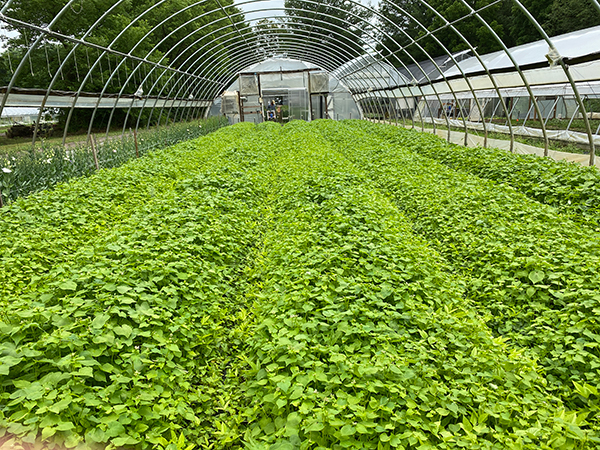
The pH of our water comes out at 7.6 and our alkalinity at 318 ppm. This has led to calcium buildup in the soil and combined with our Pewamo soil type that doesn’t drain well, it is very difficult to leech out. An agricultural consultant suggested we uncover the house and cover crop it, perhaps add drainage in the beds and to treat water with acid so that the buildup isn’t as intense and we can get the water to saturate the soil. We were trying to keep the beds pretty dry since we don’t have a lot of sun here in Ohio to help decrease disease pressure, but what we learned is that also makes the calcium crystallize on the soil surface.
So this year, we uncovered a couple houses that had the most issues, took them out of production by planting them with buckwheat and allowing the rainwater to work on the soil. We also used the chisel plow to make some deeper cuts into the hard pan throughout the houses when we tilled in the cover crop. We are barely able to fit our tractor in our houses if we take off the end walls.
Soil quality
Combine the above water issues with greenhouses that we’ve now been producing in since 2007, and the fact they have been covered the whole time, and you end up with soil issues as well. When we had some meltdown in our butterfly ranunculus beds, we tested both the plant tissue and the soil to see if there was something happening in the soil or if the plant was just not taking up the nutrients it needed.
Every year we get soil tests done in the houses to determine our nutrient mix for the year. Most companies that sell fertilizers or soil amendments will help you interpret your soil test results to be sure that you’re giving the plants what they need. We use Yoder’s Produce in Ohio as those folks are so knowledgeable (and they can calculate ratios in their heads).
Each year what the plants need differs a little bit based on what still remains in the soil from what you put down the previous year. Some nutrients leech out of the soil or are taken up by the plants and removed when you cut the blooms or rip out the crop. So, yearly tests are a good way to figure out what is happening in the soil.
Because we only grow cut flowers, we haven’t nailed down an exact rotation, but we do not plant dusty miller or lisianthus in the same beds that they were in the previous year for disease control. This is another reason soil health is so important: stressed plants are more prone to disease.
The butterfly ranunculus mentioned above had a boron toxicity (that an employee either had not properly recorded or measured), as well as calcium buildup in the soil, which led to them getting phytophthora and melting down. When we dug the corms out of that bed, they hadn’t even produced roots from the original corms.
When we have issues with plants, we always send them to the lab for testing. This allows a pro to advise us on what’s happening instead of trying to play the Google guessing game. Once you’ve seen a disease and you know what to look for, scouting weekly helps to catch issues early.
At that point you can hopefully mend the situation with some kind of treatment or nutrients, or mechanical control like more venting or warmer air. Each pest and disease has its optimal conditions, but unfortunately when it’s cold outside and you are growing in greenhouses, the structures are optimal conditions for a lot of things.
Want a deeper dive into growing flowers in hoophouses and greenhouses? This winter we’ll be teaching a class for The Gardener’s Workshop called Flower Farming School Online: Growing Cut-Flower Crops in Hoops & Greenhouses! Join our mailing list for our resource sharing leading up to the registration period from November 16 to 20. If you join our list, one lucky winner will be chosen for free registration.
This six-week class starts January 6, and will include more detail about specific crops, crop planning, choosing a structure, and more. And each week we’ll have a Facebook Live chat to discuss any questions that arise in your studies, so you’ll get live support.
Steve and Gretel Adams operate Sunny Meadows Flower Farm in Columbus, Ohio. Their dahlia tuber sales go live in late November. SMFF ships flowers nationwide, so if you don’t have season extension or you need more of a specific color for an event, we’ve got your back. Send an email to [email protected] for more details about how to get setup as a customer.

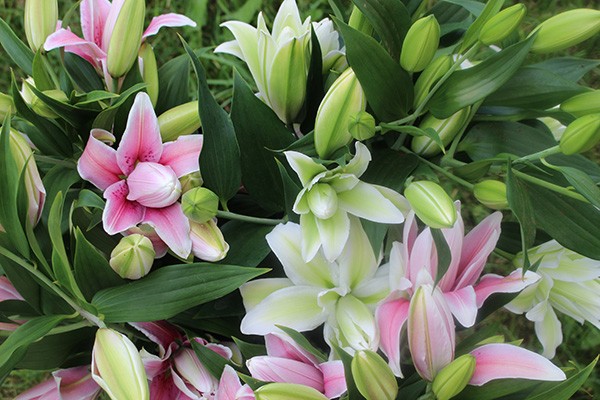 As soon as we start driving our routes in the spring our customers ask us when we’ll have roselilies. They’re that popular and have become a signature crop for us. They’re basically a type of oriental lily, but with multiple layers of petals, and without stamens and pistils (i.e. no pollen!).
As soon as we start driving our routes in the spring our customers ask us when we’ll have roselilies. They’re that popular and have become a signature crop for us. They’re basically a type of oriental lily, but with multiple layers of petals, and without stamens and pistils (i.e. no pollen!). 
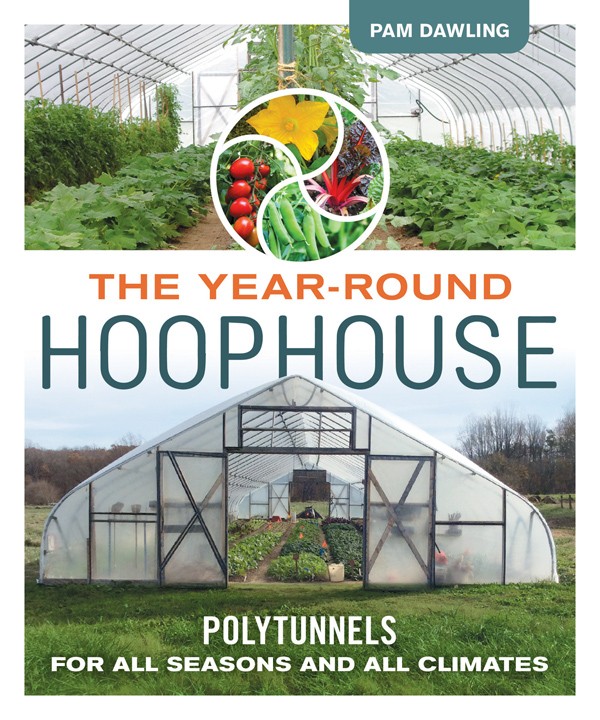 In the hoophouse plants grow bigger and faster. We want to avoid anything that slows growth down. All that growing burns up the organic matter and nutrients in the soil at a fast rate, particularly in hot, humid climates. We need to replenish the soil more generously and more often than we do outdoors. Good soil health means having enough plant nutrients, not surplus. If you have too much soluble nitrogen (N), it can leach into the groundwater or burn up the organic matter. Using manure or compost for a nitrogen source can cause the build-up of excess phosphorus (P).
In the hoophouse plants grow bigger and faster. We want to avoid anything that slows growth down. All that growing burns up the organic matter and nutrients in the soil at a fast rate, particularly in hot, humid climates. We need to replenish the soil more generously and more often than we do outdoors. Good soil health means having enough plant nutrients, not surplus. If you have too much soluble nitrogen (N), it can leach into the groundwater or burn up the organic matter. Using manure or compost for a nitrogen source can cause the build-up of excess phosphorus (P).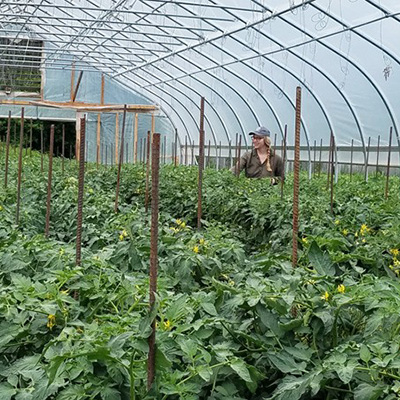
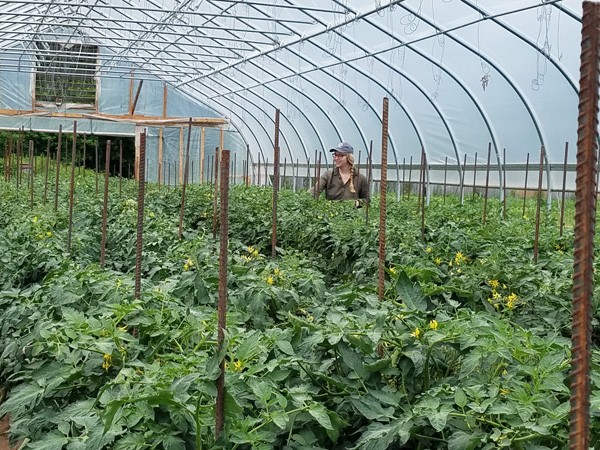 High tunnels have played a crucial role in season extension for market growers, with popularity increasing over the last decade to meet demand for locally grown produce year round (or close to it). Once built, the high tunnel becomes some of the most valuable real estate on the farm and many growers are able to produce exceptional yields in the first few years. After several seasons, yields begin to decline and many growers struggle to maintain productivity.
High tunnels have played a crucial role in season extension for market growers, with popularity increasing over the last decade to meet demand for locally grown produce year round (or close to it). Once built, the high tunnel becomes some of the most valuable real estate on the farm and many growers are able to produce exceptional yields in the first few years. After several seasons, yields begin to decline and many growers struggle to maintain productivity. 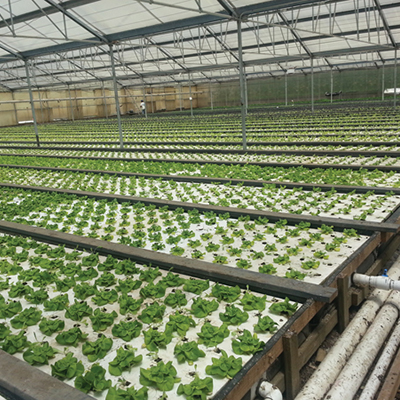


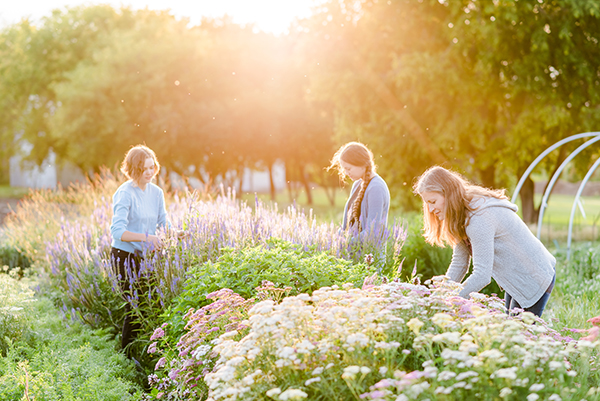 Farming in any location is challenging. Imagine the challenge of growing crops at latitude 54.5° where winter temperatures hit minus 40° Celsius (minus 40° Fahrenheit) and a mere 100-day growing season can be abbreviated with a large dump of snow at the beginning of September. Meanwhile during the spring, Chinook winds blow and the high latitude’s strong sun alters flowers’ growing cycles.
Farming in any location is challenging. Imagine the challenge of growing crops at latitude 54.5° where winter temperatures hit minus 40° Celsius (minus 40° Fahrenheit) and a mere 100-day growing season can be abbreviated with a large dump of snow at the beginning of September. Meanwhile during the spring, Chinook winds blow and the high latitude’s strong sun alters flowers’ growing cycles. 
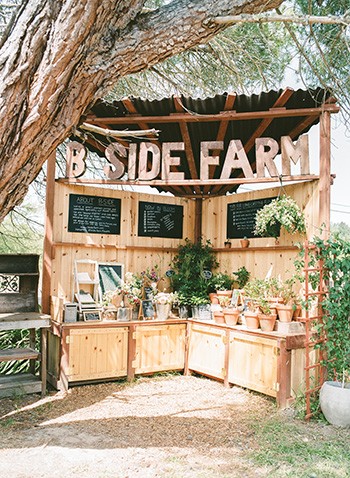 Northern California is beautiful in its own unique way in August, with dried out hills covered in brown grass and widely branched, stately live oaks sprinkled around, and a
Northern California is beautiful in its own unique way in August, with dried out hills covered in brown grass and widely branched, stately live oaks sprinkled around, and a
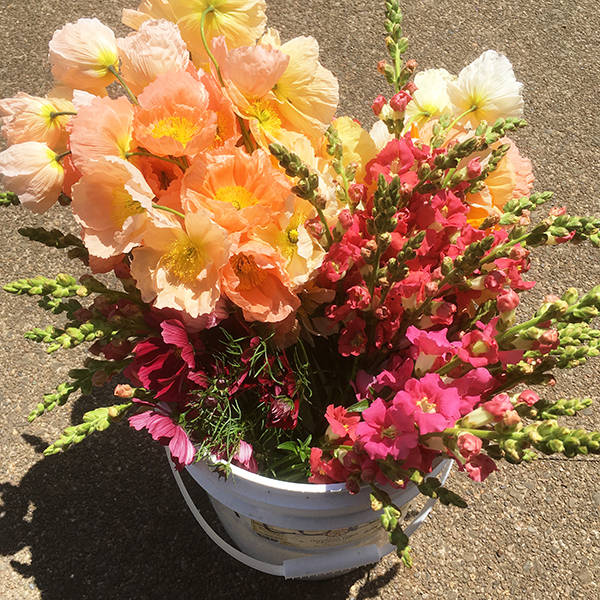 Part 1 of this series discussed why and how to add cut flowers to your vegetable farm. This part discusses production in more detail, especially harvest and post-harvest handling. Part 3 will focus on marketing.
Part 1 of this series discussed why and how to add cut flowers to your vegetable farm. This part discusses production in more detail, especially harvest and post-harvest handling. Part 3 will focus on marketing.
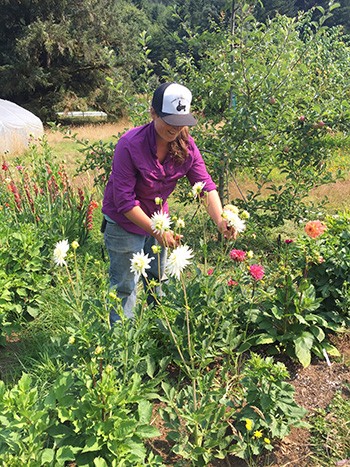

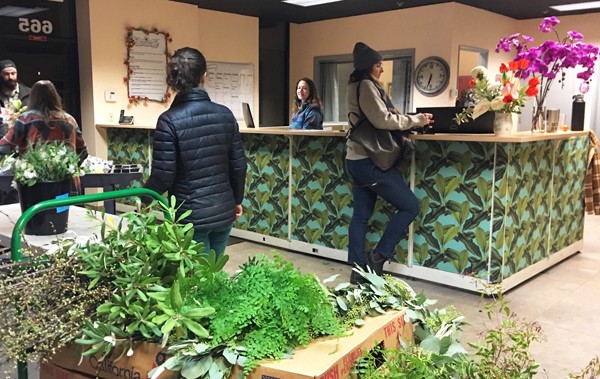 It takes courage to farm, no way around it and no matter what you farm. If you are trying to pull a living from working the land, you learn to live with risk on a daily basis, in a way that earning a regular paycheck won’t teach.
It takes courage to farm, no way around it and no matter what you farm. If you are trying to pull a living from working the land, you learn to live with risk on a daily basis, in a way that earning a regular paycheck won’t teach.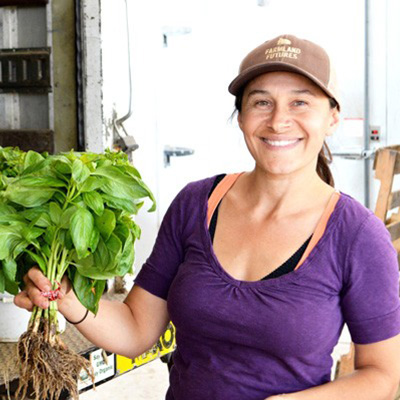
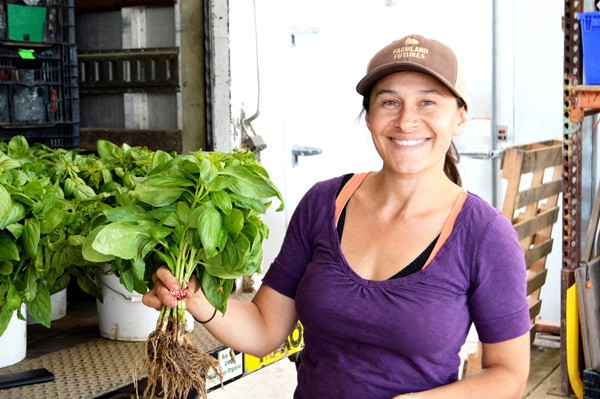 Fifth Crow Farm lies nestled below some ragged hills – the native grass fully brown, the oaks wide and green. The farm grows 50 acres of certified organic crops on 150 acres of leased land, including vegetables, cut flowers, dry beans and eggs. The farm land is completely flat, tucked in a tiny valley in zone 9B. Believe it or not, just across the street, a mere two miles from the ocean, there are acres and acres of open land with cows grazing. How can land so close to such beauty, and with such a wonderful growing season be devoid of development? The answer is complicated, but mostly it’s because the parcels of land have always been quite large, and much of it is being purchased for conservation purposes.
Fifth Crow Farm lies nestled below some ragged hills – the native grass fully brown, the oaks wide and green. The farm grows 50 acres of certified organic crops on 150 acres of leased land, including vegetables, cut flowers, dry beans and eggs. The farm land is completely flat, tucked in a tiny valley in zone 9B. Believe it or not, just across the street, a mere two miles from the ocean, there are acres and acres of open land with cows grazing. How can land so close to such beauty, and with such a wonderful growing season be devoid of development? The answer is complicated, but mostly it’s because the parcels of land have always been quite large, and much of it is being purchased for conservation purposes.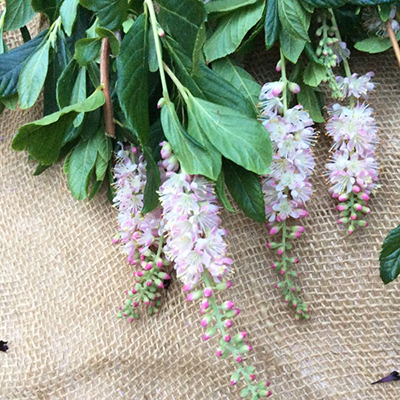
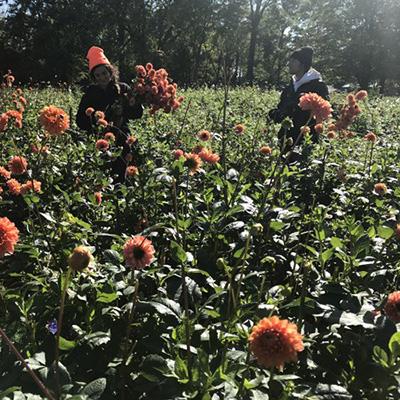
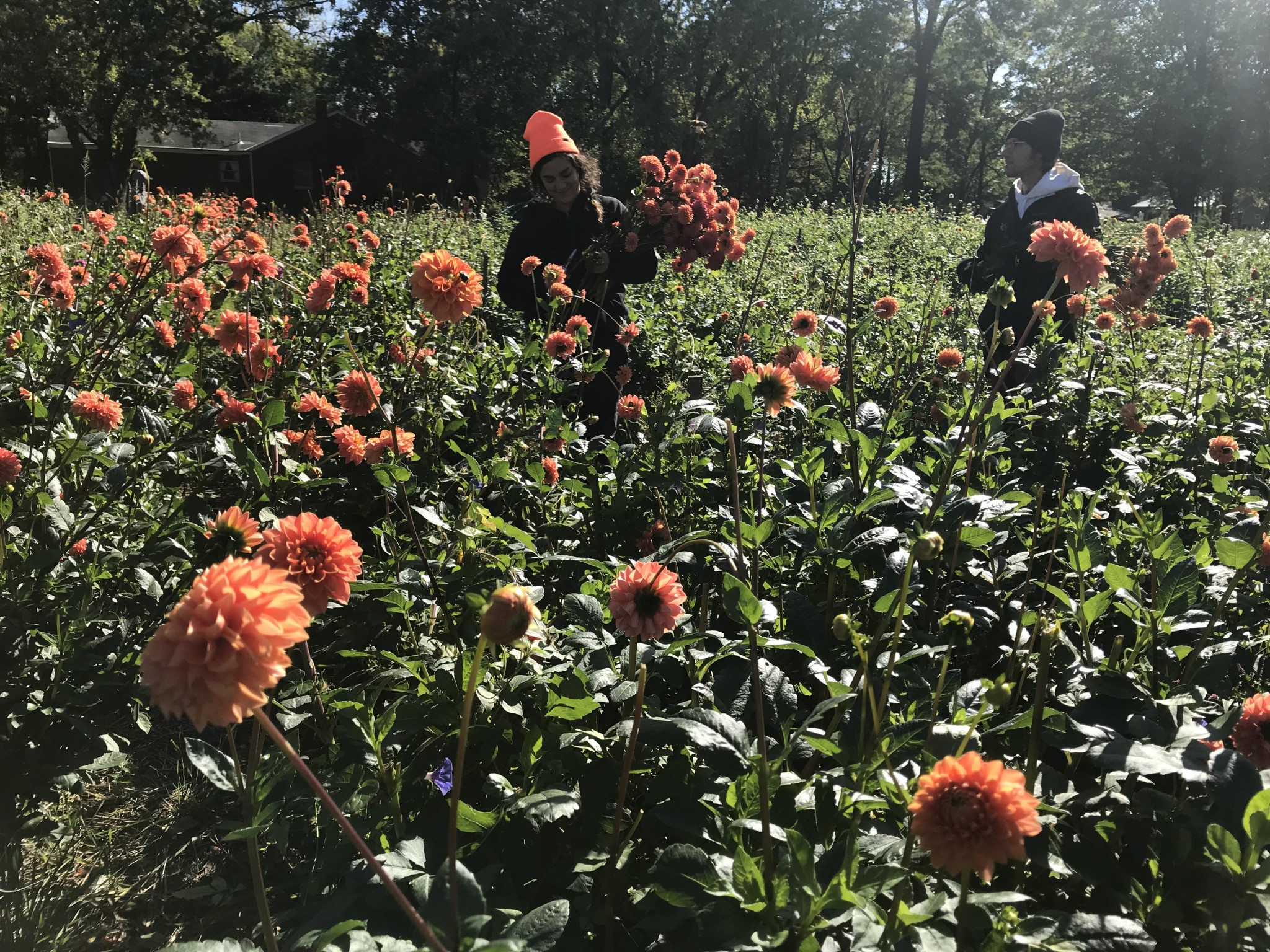 Dahlias were our number one crop this year, even beating out lisianthus and ranunculus by a landslide. We have tried many different methods of growing them, and these are the solutions we’ve come up with. I’m sure there are still better ways, and if you know of any, definitely send them our way! This year we planted 7,000 dahlias and plan to plant even more next year as we increase our growing space. Let’s just start at the beginning with planting and work our way through the whole process.
Dahlias were our number one crop this year, even beating out lisianthus and ranunculus by a landslide. We have tried many different methods of growing them, and these are the solutions we’ve come up with. I’m sure there are still better ways, and if you know of any, definitely send them our way! This year we planted 7,000 dahlias and plan to plant even more next year as we increase our growing space. Let’s just start at the beginning with planting and work our way through the whole process.